As the international aerospace community converges on the 47th Farnborough air show, models and mock-ups of Boeing's A160 Hummingbird will be on hand as part of the US aerospace company's massive showing, which includes its own unmanned air vehicle pavilion.
But the aircraft itself and those who know it best will be off somewhere near the equator, putting the innovative unmanned helicopter through its paces and proving out a new payload over the tropical jungles.
The Hummingbird is not as slight as its name suggests. With an 11m (36ft) rotor diameter nearly as wide as the 10.7m autonomous helicopter is long, it is larger than other vertical take-off UAVs. But weighing in at 1,135kg (2,500lb), with its largely composite frame, it is also lighter, making up for the fact that it carries 45kg more than its weight in fuel.
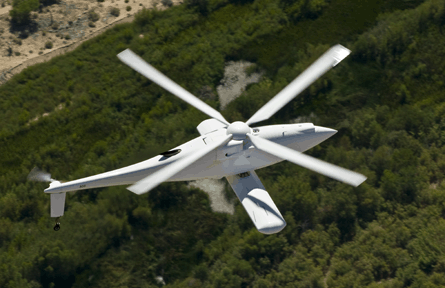 |
|---|
© BoeingThe ability to shift to another gear has given the A160 the record for endurance |
However, what makes the A160 unique is not something visible in its low-drag, reduced radar profile silhouette.
SPECIAL SAUCE
The helicopter's "special sauce," as its engineers and programmme managers call it, is all in the transmission. The patented optimum speed rotor technology, conceived by UAV godfather Abe Karem, is "what makes the A160 the A160", says programme manager Ernie Wattam. The adjustable rotor speed makes it possible for the A160
In conventional helicopters, the revolutions per minute of the rotors is normally locked in for a maximum forward speed, given weight and altitude considerations. At maximum forward speed, the tip of the advancing blade moves at speeds slightly under Mach 1, avoiding the drag and vibration seen at higher speeds.
But being locked into a constant maximum rotor RPM also means that anything less that maximum forward speed - a hover, low-speed forward flight - the rotor is moving far faster than actually necessary, wasting fuel and creating drag, shortening the helicopter's range.
"If you go down the highway and you keep your car in second gear, you get a certain speed and a certain range with your gas mileage," Wattam says. "But if you simply shift to fourth gear, you can double your speed and double your range. That's exactly what the OSR technology does for A160. And that's what makes it unique."
The ability to shift to another gear has given the A160 the record for endurance in its class - 18.7h. "And we still landed with an hour and a half of fuel," Wattam says. "And that was carrying a 300-and-something pound payload." Wattam and other programme officials estimate the Hummingbird's top speed around 165kt (305km/h), with a service ceiling of between 20,000ft and 30,000ft and a range of around 2,500nm (4,620km).
The aircraft's unique blades are also a factor in its speed and range. The stiffness and cross-section of the A160's rotor blades vary along their length. The low-loading hingeless design allows for changing RPMs to optimise efficiency at different speeds and altitudes.
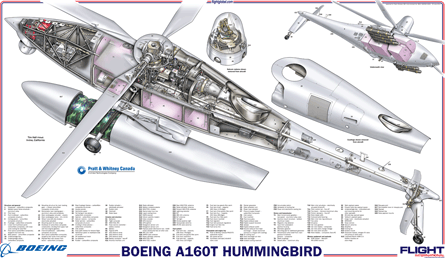 |
|---|
Click to graphic for full size cutaway |
Although variable speed rotor helicopters have been considered over the years, it is advances in composites technology that helped bring things together for the A160, says Mike Lavoranda, Boeing's deputy programme manager. One of the reasons conventional helicopters' rotor speeds are fixed is because varying it drives resonant frequencies into the airframe, essentially rattling it apart, he says.
"It wasn't until recent years that we've had the technology from a composites perspective and also from a computational perspective that we've been able to design structures that can accommodate varying the rotor speeds without hitting resonant frequencies that would break up the airframe," Lavoranda says.
The fuselage's two large, stiff monocoque skins help keep the frequency ranges of the structure outside the frequency ranges of the rotor as it changes its speeds. Most of the bulkheads are also composites, along with the retractable landing gear struts and the four rotor blades. The small amount of metal found in the A160 is in the aluminium nose frame - the truss structure in the nose of the aircraft where most of the intelligence, surveillance, reconnaissance payload is incorporated - and a few metallic bulkheads.
"Outside the engine and places where you typically have metal components, the airframe is all composites," Lavoranda says.
The engine is a Pratt & Whitney Canada PW207D turboshaft, a single-stage shrouded power turbine known for high efficiency and low vibration, which also powers Bell Helicopter's Eagle Eye UAV.
The P&WC engine was not a part of the original A160 concept conceived by Karem, his company Frontier Aircraft and the Defense Advanced Research Projects Agency (DARPA).
AIRCRAFT DEVELOPMENT
"We were originally working with DARPA on developing and integrating a diesel engine," Lavoranda says. "In the interim, as we were waiting for the diesel, we needed to start developing the aircraft and flying the aircraft, so we incorporated first a four-cylinder Subaru automotive engine and then went to a six-cylinder engine for some additional power."
When diesel development could not keep pace with the aircraft, Boeing and DARPA made a joint decision in 2007 to abandon the diesel aspect of the project in favour of a deployable aircraft with a proven, commercially available engine. Karem had already sold Frontier, and the unmanned rights to the patented OSR technology, to Boeing three years previously.
With much lower specific fuel consumption on a diesel engine than a turboshaft, the significantly greater range and endurance of diesel power remain attractive, Lavoranda says, "but right now we're not actively looking at that."
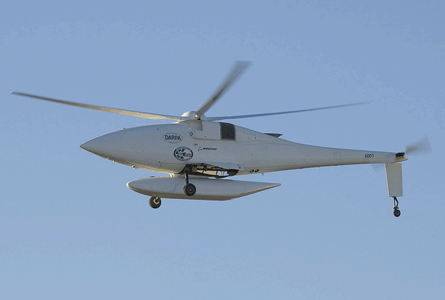 |
|---|
© Boeing |
The Hummingbird has come a long way since the diesel-powered, variable-speed rotor experiment that was awarded a 30-month technology demonstration contract in March 1998.
A little over a year later, Frontier was testing the autonomous flight control systems on the Maverick, a modified Robinson R22 helicopter that crashed in 2000 with more than 200 flight test hours under its belt.
The first true Hummingbird prototype, a three-bladed design, debuted in December 2001 and had its first forward flight the following month at former US Air Force base at Victorville, California, using a Subaru engine.
In September 2003, DARPA awarded Frontier a $75 million contract for the design, development and testing of four A160s. By May 2004, Boeing had purchased Frontier from Karem. In August 2005, Frontier Systems - now a Boeing subsidiary - received a $50 million contract from the Naval Air Warfare Center Aircraft Division to examine the affordability of long-range VTOL UAVs for payload delivery.
UNUSUAL MOVE
Even with all the experimentation and proving out of concepts, the Pentagon has been slow to purchase the Hummingbird, either as a government-owned platform or as a contractor-owned "power-by-the-hour" asset in the same way that surveillance time is purchased on the Boeing Insitu ScanEagle platform.
With no orders on the books, Boeing made the decision in late 2009 to put the helicopter into production, an unusual move in a business where manufacturers usually wait for a contract award or at least a military requirement before opening production.
A line was established in Mesa, Arizona on the same campus where the Boeing AH-64 Apache is built and assembly on the first of 21 new A160s began on 15 March. White-tail A160s are expected to be available in early 2011.
In the meantime, Boeing continues to work with the Pentagon on a variety of applications for the VTOL UAV. The team is under contract with the Aviation Applied Technology Directorate at Ft Eustis in Virginia to expand the A160's flight envelope.
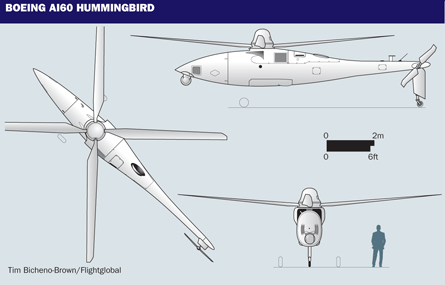 |
|---|
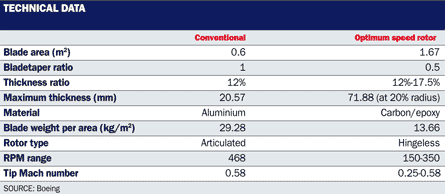 |
"We're slowly expanding up and we think the top end of the bird is somewhere around 165kt," Wattam says. "That's pretty impressive for a helicopter."
The A160 has already demonstrated its ISR capabilities to the US Army, as far back as 2008, at an annual C4ISR exercise at Fort Dix in New Jersey. Operating at the army's Class IV UAV for the exercise, the Hummingbird integrated five different payloads for the event, Lavoranda says, including a 380mm (15in) Wescam electro-optical/infrared sensor ball and two mini tactical common datalink transceivers used to downlink full motion video from the EO/IR sensor Rover terminals to both mounted and dismounted troops with Rover terminals.
The Hummingbird also proved its role as a communications relay, keeping two Humvees in contact when they moved out of the line of sight. "They didn't even realise they had lost communication because of the seamless reallocation of the network that we provided," Lavoranda says.
Wattam says the team has responded to several requests for information, including one from the US Navy for persistent shipboard operations and a resupply request from the US Marine Corps. "We're expecting a [request for proposals] anytime now to actually take the A160 and deploy to Afghanistan in a cargo resupply capacity," Wattam says.
In March, during six flights in two days, the A160 demonstrated its autonomous cargo delivery capabilities to the Marines, Wattam says, consistently delivering sling-loaded cargo within 1.2m of the target drop site. "Now we've proven we can not only put a sensor up there and keep it up there for two-thirds of the day, we've also proved that we're multi-mission, if you want to take cargo and deliver that, we can deliver it very precisely, unmanned, so you take people off the roads," he says.
The A160's proprietary, portable ground control system makes it possible to deliver cargo without a trained UAV pilot at the delivery site, Wattam says. At the March demonstration at Dugway Proving Grounds in Utah, the Hummingbird was required to autonomously fly a pattern, deliver its load, return to the launch site and shut itself down. Delivery to a forward operating location is easily achieved with a Panasonic Toughbook and relatively self-explanatory software, Lavoranda says.
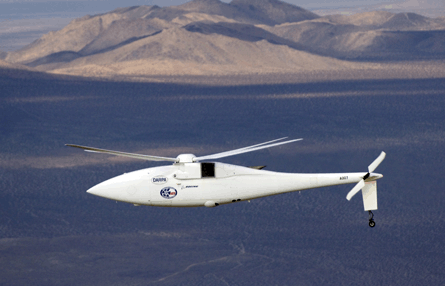 |
|---|
© Boeing |
After the UAV flies its pre-planned route, it stops and orbits until someone at the forward delivery location instructs it, with the touch of a button, to proceed to the inbound delivery point. Once there, another click tells it to hover over the delivery point. Adjustments can be made within a 1km range of the original delivery site before instructing the Hummingbird to lower its load, release the cable and head home on its predetermined path.
WORKING WITH MILITARY
Operators can watch delivery on the drone's camera, Lavoranda says, but it is not necessary for the A160 to complete the task, even in brownout conditions. "If you know where you want the load, the bird doesn't care," he says. "It'll put the load down where you tell it, within a couple of feet."
Boeing is working with the military to integrate the A160's proprietary ground control system into the Universal Ground Control Station (UGCS), the US Army's preferred UAV control system, which itself is still in development. A vehicle-specific module for UGCS the A160 is expected to be complete by the end of the year, Wattam says.
For now, the Hummingbird team is headed south rather than Farnborough, Wattam says, to spend 45 days demonstrating DARPA's Forester radar system under a contract with US Special Operations Command. SOCOM has previously discussed plans to order as many as 20 A160s, which would be redesigned the YMQ-18, but no contract has materialised yet.
The Foliage Penetration (Fopen) reconnaissance, surveillance, tracking and engagement radar is designed to track vehicles on the ground through a triple layer of canopy foliage.
The 6.7m radar is aligned under the A160's fuselage on take-off. When the landing gear is retracted "you climb up to altitude with this system, point the nose into the wind and you stabilise the hover and then you turn that radar to point at the area you want to look at, any direction", Wattam says, citing the retractable landing gear as only one of the A160's many desirable features. "Nobody else can do that right now."
Source: Flight International



















